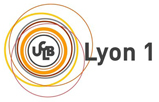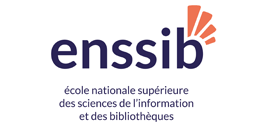The making of opinions : a multisdisciplinary point of view.
The conference will be in English
"Je pense donc je suis": we, human beings are to some extent defined by our ability to think, i.e. to produce ideas. Some of those ideas can be called "opinions" in the sense that they integrate a judgemental connotation. One important question is: how do we forge our opinions? How much are they the expression of our "libre abitre" and how much are they related to the propagation of doxa, that is the shared body of predominant opinions among a given society? This of course might be seen as especially important in the wake of the "fake news" propagation, where traditional scientific logic-based opinions have become largely inaudible.
We will gather a very diverse body of researchers from very different disciplines to interrogate how our opinions are formed, maintained, and maybe changed. We will balance both model-based results with more empirical data-based approaches.
Organizing committee
- Jean-Sylvestre Bergé
- Olivier Gandrillon
- Marton Karsai
- Pablo Jensen
- Jean-Paul Lena
- Jean-Philippe Magué
Program :
09h00 – 09h45: Frequency and stability in social and cultural systems. Christine Cuskley, University of Edinburgh
09h45 – 10h30: Opinion Dynamics from a Mathematical Point of View. Morgane Bergot and Thibault Espinasse, Institut Camille Jordan, Université de Lyon
10h30 –11h00: Coffee break
11h00 – 11h45: Trajectories and interactions of actors and arguments in health and environment controversies. Josquin Debaz, GSPR, Ecole des hautes études en sciences sociales
11h45 – 12h30: Dynamics of opinions about one-self and others. Guillaume Deffuant, IRSTEA – Clermont Ferrand
12h30 - 14h00 : Lunch
14h00 – 14h45: Integration of individual and social information for decision-making in groups of different sizes. Jean-Claude Dreher, Cognitive Neuroscience Center, Université de Lyon
14h45 – 15h30: How social information enhances collective intelligence in social insects and human groups. Guy Théraulaz, Research Centre on Animal Cognition, Université Paul Sabatier
15h30 – 16h00: Coffee break
16h00 – 16h45: Modelling opinions in social networks: From communities to conflict, influence, and deceit. Gerardo Iñiguez, IIMAS, UNAM, Mexico
Abstracts :
Frequency and stability in social and cultural systems by Christine Cuskley, University of Edinburgh
In language we observe that highly frequent constructions are more stable over time: for example, highly frequent words are more robust against change than lower frequency words. This trend has functional a explanation: words with high usage frequency are less free to vary in their forms because this is more likely to cause communicative failure. This is analogous to purifying selection in biology, wherein traits with acute survival relevance exhibit less variation. This demonstrates that evolutionary and selective forces at work in biological systems have high potential relevance in cultural domains. This talk will focus on how this pattern plays out in complex linguistic systems, and how we might extend these findings to other cultural systems.
Opinion Dynamics from a Mathematical Point of View by Morgane Bergot and Thibault Espinasse, Institut Camille Jordan, Université de Lyon
The formation of opinion in a large population is influenced by endogenous factors, such as interaction with peers - in person and via social media - as well as exogenous factors, such as mainstream media. Many mathematical models are used to describe, and sometimes predict the opinion of individuals or groups.
We will first show through a survey of classical mathematical models for opinion dynamics how a model often provides only the behavior we put in - consciously or not. However, even very simple models are interesting for mathematicians. The main reason may be that difficult mathematical questions raise from such models - for instance showing the equivalence between agent-based and mean-fields equations. But another reason could be that simulated evolutions sometimes exhibit properties that were not anticipated.
In a second part, we will show through a simulation study how unexpected behavior can emerge from a model in which mainstream media define discussion topics, and where individual opinions are formed only when a question is brought to the public debate. With this model, consensus on the importance of the question is reached, but the opinion on this subject appears to be incidental.
Trajectories and interactions of actors and arguments in health and environment controversies by Josquin Debaz, GSPR, Ecole des hautes études en sciences sociales
For the last decades, the proliferation of causes engaging techno-scientific dimensions immerses us in « controversial universes » where conflicting cases and affairs follow one another without being impeded by regulatory institutions. Following in the long run trajectories of arguments, and the sets of actors who carry them, inquiries show how they strengthen, struggle for visibility and evolve in the hierarchy of public expressions, merge and split. In the search for resolution, or to state an irreducible conflict, actors multiply arenas and modes of expression, bring new facts or even devote to the production of doubt, attempting to take hold on compulsory steps or to provokes irreversibilities. Stressing the importance of turning points, I will expose a sociological model of transformations taking into account unpredictability and complexity of trajectories continuously disrupted with emergence, or re-emergence, strong events and slow silent processes.
Dynamics of opinions about one-self and others by Guillaume Deffuant, IRSTEA – Clermont Ferrand
We consider a model of N agents, each characterized by an opinion about itself and all the others, represented by a real number between -1 (very bad opinion) and +1 (very good opinion). The agents meet by randomly chosen pairs and influence each other’s opinions through two processes: (i) vanity: agents increase their opinion of agents that value them highly and decrease their opinion of agents and undervalue them (ii) gossiping: agents propagate their opinions about other agents they know, in particular about themselves and about the agent they are talking with. The model includes two main additional hypotheses: (i) agents have a noisy access to the other’s opinions, with a uniform symmetric noise (ii) agents adopt more easily the opinions of the agents that they highly value. We study more particularly the case where the vanity process dominates over the opinion propagation. In this case, the opinions converge to a pattern in which each agent has a small set of “friends” (agents which are valued close to +1) and all the others are “enemies” (agents which are valued close to -1). The network of friends tends to show the characteristics of a small world. Moreover, all the agents have a positive opinion of themselves. We unfold the interaction processes leading to this pattern, particularly the asymmetry between “friends” and “enemies”. We finally discuss rapidly a different pattern showing cycles where the agents lose all their friends and their positive self-opinion and then manage make friends again and restore their positive self-opinion.
Integration of individual and social information for decision-making in groups of different sizes by Jean-Claude Dreher, Cognitive Neuroscience Center, Université de Lyon
In collective decisions, both the size of groups and the confidence that each member has in their own judgment determine how much a given individual will adapt to the judgment of the group. Here, we show that judgment adaptation during collective decisions -a fundamental brain mechanism needed for fluid functioning of social organizations- can be accounted for by Bayesian inference computations. At the time of judgment adaptation, individuals trade off the credibility inferred from their own confidence levels against the credibility of social information. The dorsal anterior cingulate cortex (dACC) represented belief updates, while the lateral frontopolar cortex (FPC) monitored the changes in credibility assigned to social information. These results provide a neurocomputational understanding of how individuals benefit both from the wisdom of larger groups and from their own confidence.
How social information enhances collective intelligence in social insects and human groups by Guy Théraulaz, Research Centre on Animal Cognition, Université Paul Sabatier
In animal and human groups, the direct or indirect exchange of information between members, also called social information, deeply affects individual behavior and plays a crucial role in collective decision-making. For instance, in social insects, a key element underlying decision-making takes the form of positive feedbacks that are implemented at the individual level through a modulation of individual behavior to social information which involve the active transfer information among individuals through the use of pheromone trails in ants or waggle dances in bees. In human groups, when shopping for products or services online, individuals often make their choices based on the ratings and comments of other consumers. In particular, when subjects have little prior knowledge about a quantity to estimate, their sensitivity to social influence increases with the difference between their estimate and that of the group, thus improving a group performance as long as this information is not highly misleading. Through several examples, we will illustrate some of the mechanisms by which social information allows animal and human groups to make efficient collective choices.
Modelling opinions in social networks: From communities to conflict, influence, and deceit by Gerardo Iñiguez, IIMAS, UNAM, Mexico
Opinions synthesize our perceptions and the knowledge we have on the external world, other people, and ourselves. They determine the way we process, accept or reject information, and are the result of a complex interplay between facts, our psychologies, and society. Despite the impact opinions have on social interactions and decision-making, it is often difficult to quantify their properties and understand the mechanisms that shape their temporal evolution. The insight gained from small controlled experiments, large online datasets, and idealized models of opinion formation and network change is thus essential to gauge how opinions influence the structure and dynamics of society. Here I will discuss some of our research questions in this direction, including: 1) how do opinion and tie formation mechanisms coevolve to shape groups of likely-minded people? 2) what happens to social structure when individuals are not honest about their opinions? 3) how does collaborative work in an environment of diverse opinions (like Wikipedia) promotes conflicts and their resolution? and 4) what is the effect of social influence on decision-making in online social networks (like Skype)? Our results help us not only in further understanding how people develop their opinions and social circles, but also provide quantitative strategies to decrease conflict due to opinion mismatch, or promote the spread of certain ideas in society.
References:
- G. Iñiguez, J. Kertész, K. Kaski, R. A. Barrio, Opinion and community formation in coevolving networks. Phys. Rev. E 80, 066119 (2009).
- J. Török, G. Iñiguez, T. Yasseri, M. San Miguel, K. Kaski, J. Kertész, Opinions, conflicts, and consensus: Modeling social dynamics in a collaborative environment. Phys. Rev. Lett. 110, 088701 (2013).
- G. Iñiguez, T. Govezensky, R. Dunbar, K. Kaski, R. A. Barrio, Effects of deception in social networks. Proc. R. Soc. B 281, 20141195 (2014).
- M. Karsai, G. Iñiguez, R. Kikas, K. Kaski, J. Kertész, Local cascades induced global contagion: How heterogeneous thresholds, exogenous effects, and unconcerned behaviour govern online adoption spreading. Sci. Rep. 6, 27178 (2016).










